Venture just beyond the bright lights of downtown Cripple Creek, and you’ll discover another incredible treasure: a diverse and thriving ecosystem teeming with wildlife. From the majestic elk and mule deer that roam the forests, to the soaring eagles and hawks that patrol the skies, and even the unique, free-roaming donkey herd that has become a beloved symbol of the town, Cripple Creek offers an amazing chance to see the wildlife of the Pikes Peak region. Join us as we explore the natural beauty and fascinating creatures that call this captivating corner of Colorado home.
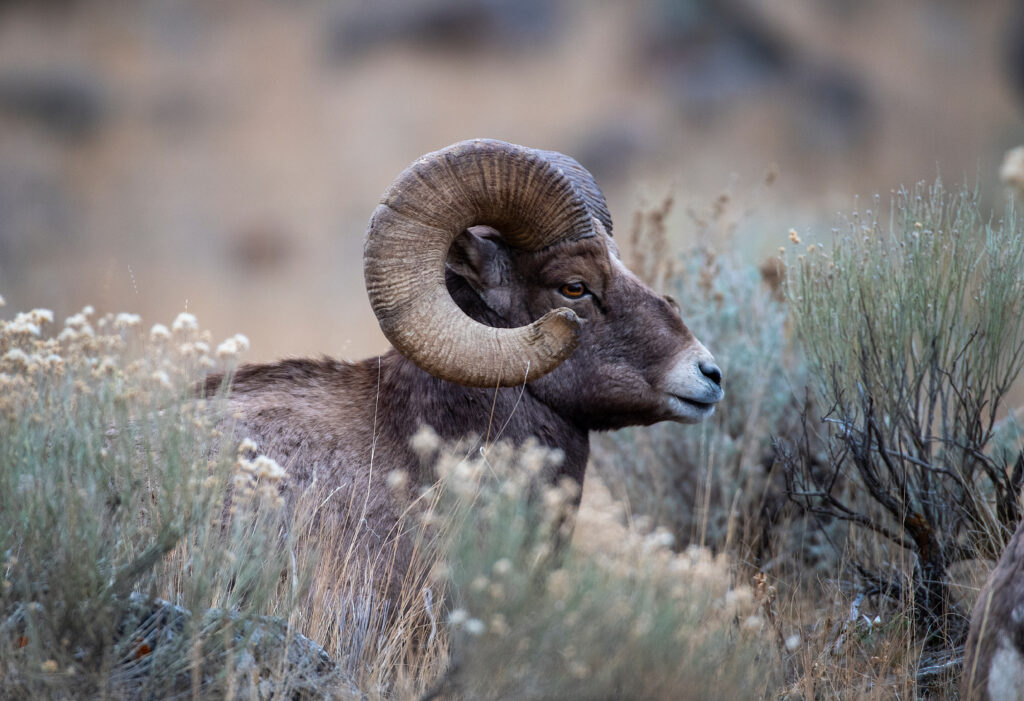
Wildlife Spotting in Cripple Creek
Cripple Creek and its surrounding forests offer excellent wildlife viewing. You can take scenic drives like the Gold Belt National Scenic Byway to spot deer, elk, and bighorn sheep, or hike in Mueller State Park, a haven for diverse animals and birds. Many scenic overlooks provide panoramic views for spotting wildlife. Plus, the historic town itself is home to a unique wild donkey herd, descendants of the mining donkeys, offering charming encounters right in town. Below are some of the common Cripple Creek animals you might spot on your visit!
Common Mammals Near Cripple Creek
Mammals: Cripple Creek is surrounded by diverse habitats ranging from dense forests to high-elevation alpine zones. This large variety in habitats supports a wide array of animals, including many mammals of every size. When exploring the area, particularly in places like Mueller State Park or even just outside of city limits, you have a good chance of encountering some of these animals.
Large Mammals
Elk: Rocky Mountain Elk are a majestic sight. They are often found in forested areas surrounding Cripple Creek. You might hear their distinctive bugle during mating season.
Mule Deer: These are perhaps the most commonly seen wildlife in Cripple Creek. You’ll often see them grazing in meadows or even near the edges of town. They are identifiable by their large ears and a small, black-tipped tail.
Black Bear: While generally shy and reclusive, black bears are present in the region. They are more likely to be seen at dawn or dusk, foraging in wooded areas.
Mountain Lion: These elusive predators are very difficult to spot due to their shy nature and camouflage. They primarily prey on deer and elk.
Bighorn Sheep: Colorado’s state mammal, bighorn sheep are incredibly agile climbers and are often spotted on rocky cliffs and slopes, especially on the drive up Pikes Peak.
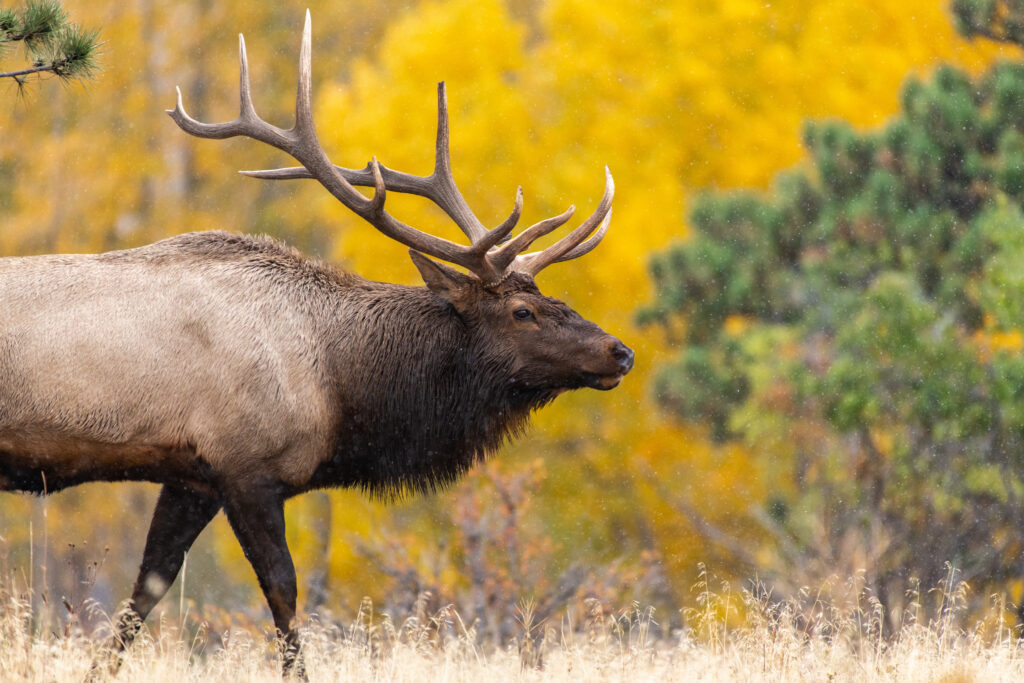
Medium-Sized Mammals
Bobcat: Like mountain lions, bobcats are shy and generally nocturnal, making sightings rare.
Fox: Both red foxes and gray foxes can be found in the Cripple Creek area. The red fox is recognizable by its reddish fur and white-tipped tail. The gray fox is sometimes mistaken for a coyote. These Cripple Creek animals can be seen around the edges of town near dawn and dusk.
Yellow-bellied Marmot: Often called “whistle pigs” for their piercing alarm call, these chubby rodents are commonly seen sunning themselves on rocks in higher elevations. Look for them on the Pikes Peak Highway.
Beaver: Look for signs of beaver activity, such as dams and lodges, near streams and ponds. This Cripple Creek animal is found in many streams and ponds surrounding town.
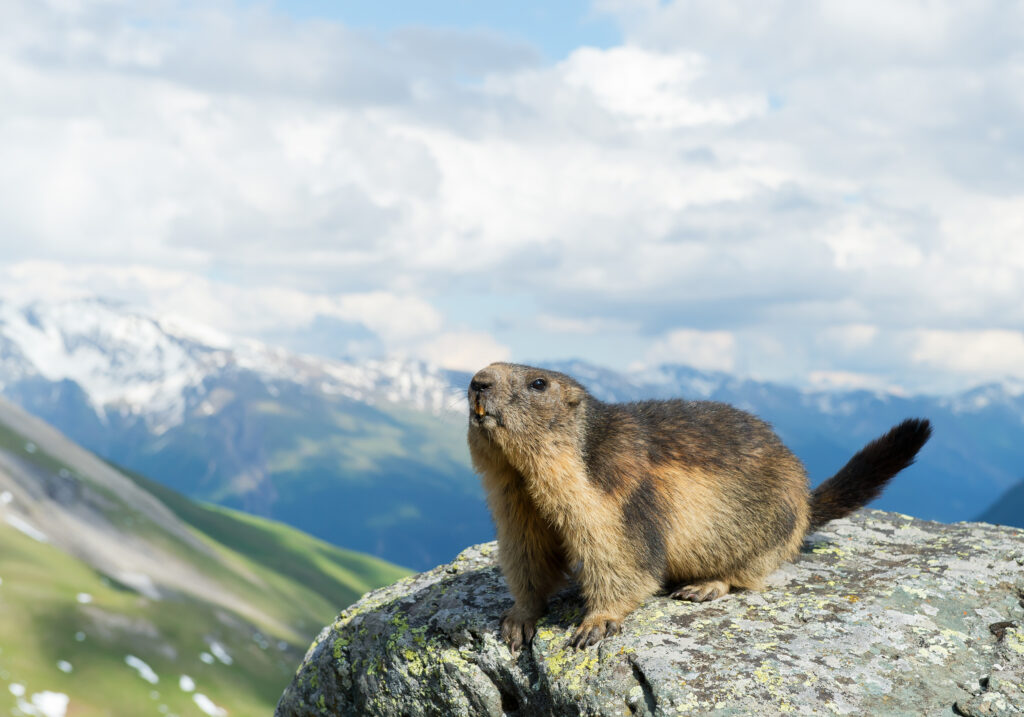
Small Mammals
Chipmunks and Squirrels: Various species of chipmunks and squirrels, including golden-mantled ground squirrels and Abert’s squirrels, are very common and can be seen scampering through trees and across trails.
American Pika: These small, tailless, rabbit-like mammals are found in high-elevation boulder fields, often gathering “haystacks” of vegetation for winter. They are very cute but can be elusive.
Rabbits and Hares: Surrounding Cripple Creek you can find mountain cottontails and snowshoe hares. Snowshoe hares adapt the environment around them to blend in with the snow and forest floor. As you walkaround looking for wildlife in Cripple Creek, look for their quick movement.
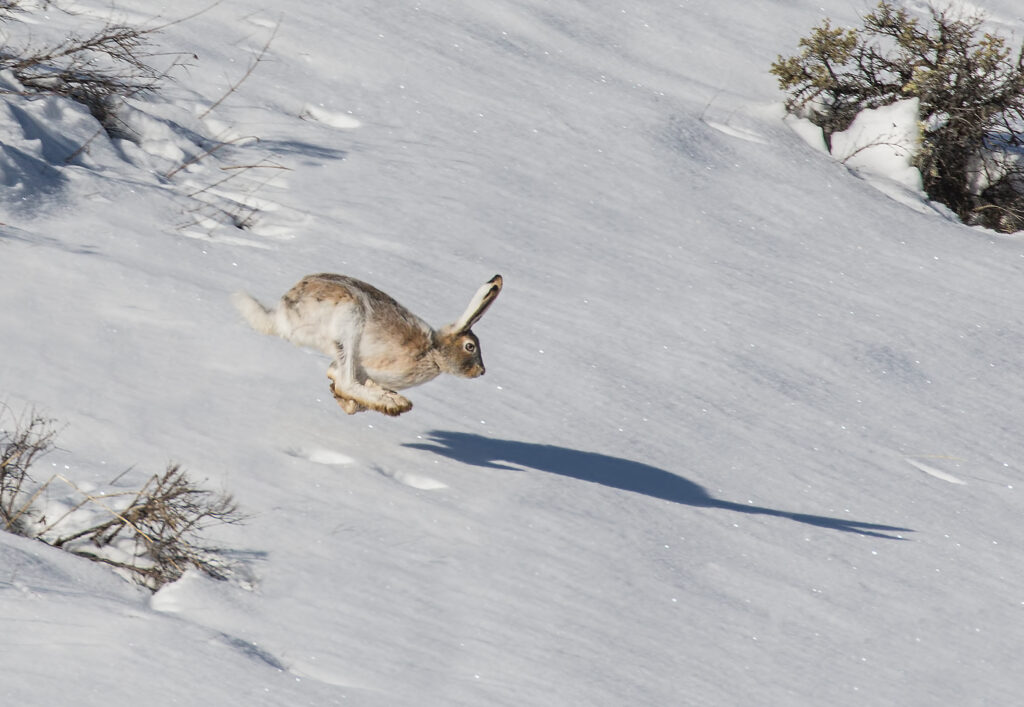
Common Birds Near Cripple Creek
Birds: Cripple Creek and its surrounding mountainous terrain are a haven for birdwatchers, boasting a remarkable diversity of over 150 bird species throughout the year. From the majestic hawks circling high above the rugged peaks to the vibrant colors and sounds of birds swooping through the forests, Cripple Creek offers bird enthusiasts an amazing opportunity to see many varieties of birds in a breathtaking location. This high-altitude environment, with its mix of forests, meadows, and rocky outcrops, provides essential habitats for both resident and migratory birds.
Wild Turkey: These large, ground-dwelling birds are unmistakable with their unique coloring, bare red and blue heads, and fanned tails. They are often seen foraging in woodlands and open areas surrounding Cripple Creek.
Red-Tailed Hawk: A common sight soaring overhead, this bird of prey is recognized by its broad wings, short fanned tail, and a piercing cry, often perching on high vantage points.
Steller’s Jay: Bold and striking, this noisy bird has a distinctive black head crest contrasting sharply with its vibrant blue body and wings. This bird is frequently seen around Cripple Creek.
Great Horned Owl: The hoots of the Great Horned Owl can often be heard echoing through the night in this region. These powerful nocturnal predators, identifiable by their prominent “ear tufts” and yellow eyes, are year-round residents and a fascinating part of the local Cripple Creek wildlife.
Woodpecker: This medium-sized woodpecker is identified by its black and white checkered plumage, a prominent white stripe down its back, and a strong, straight bill used for drilling into trees for insects. Listen closely when near a wooded forest for their rapid drilling, as they search for their next meal.
Bald Eagle: As you explore Cripple Creek keep an eye out for a majestic bald eagle soaring high above the pines. Its distinctive white head and tail feathers are unmistakable against the clear blue sky, and this Cripple Creek animal is a truly inspiring sight in the Colorado wilderness.

Common Reptiles Near Cripple Creek
Reptiles: When it comes to observing animals in Cripple Creek, you might notice there are not many reptiles. At over 9,000 feet, Cripple Creek’s climate is significantly cooler and features a shorter warm season compared to lower-lying areas. This naturally limits the diversity of cold-blooded creatures in the region, like snakes and lizards. While you might not find many reptiles here, you are likely to see more closer to Colorado Springs or Cañon City.
Garter Snake: This is the most common snake you’ll encounter. They are highly adaptable and often found near water sources, such as ponds and streams. They vary in color but typically have a yellow or orange stripe down their back.
Prairie Lizard: These are common “fence lizards” found in a variety of habitats, often seen basking on rocks, logs, or fences. They are typically gray or brown with rough, keeled scales.
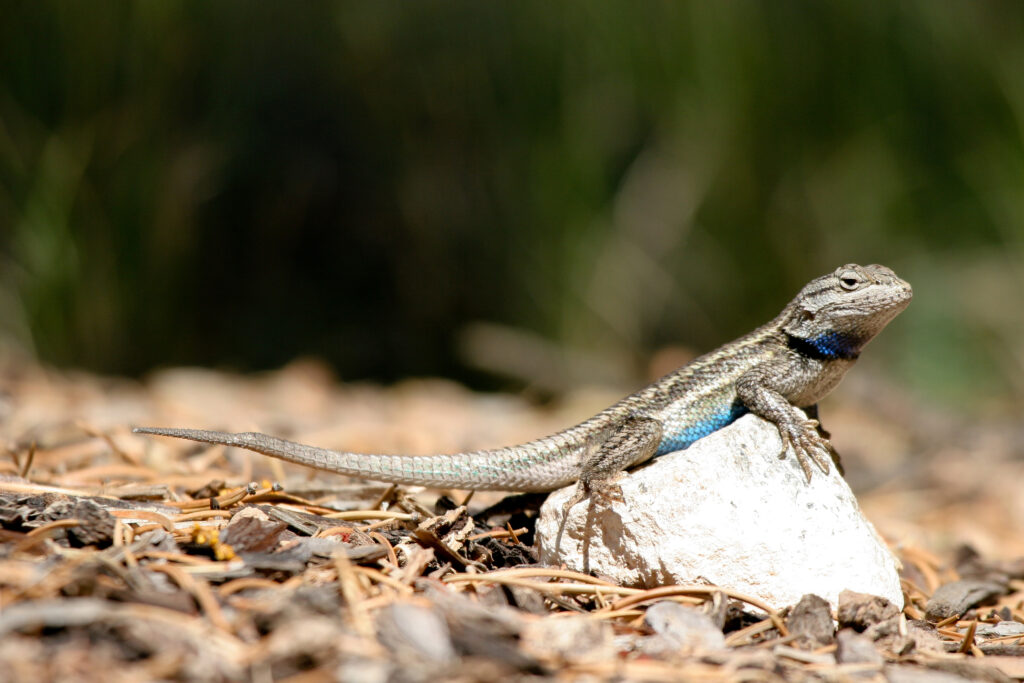
Cripple Creek’s Local Donkey Herd
Cripple Creek is famously home to a beloved herd of donkeys that roam freely through the town’s historic streets from spring to fall. While not truly wild, these gentle animals are direct descendants of the hardy burros that played a crucial role in the region’s gold rush era, hauling ore and supplies through the rugged mining tunnels. When modern technology replaced their labor in the early 20th century, many were released to roam freely. The non-profit Two Mile High Club was established in 1931 to ensure their well-being, and today, it provides year-round care, including food, veterinary attention, and winter shelter.
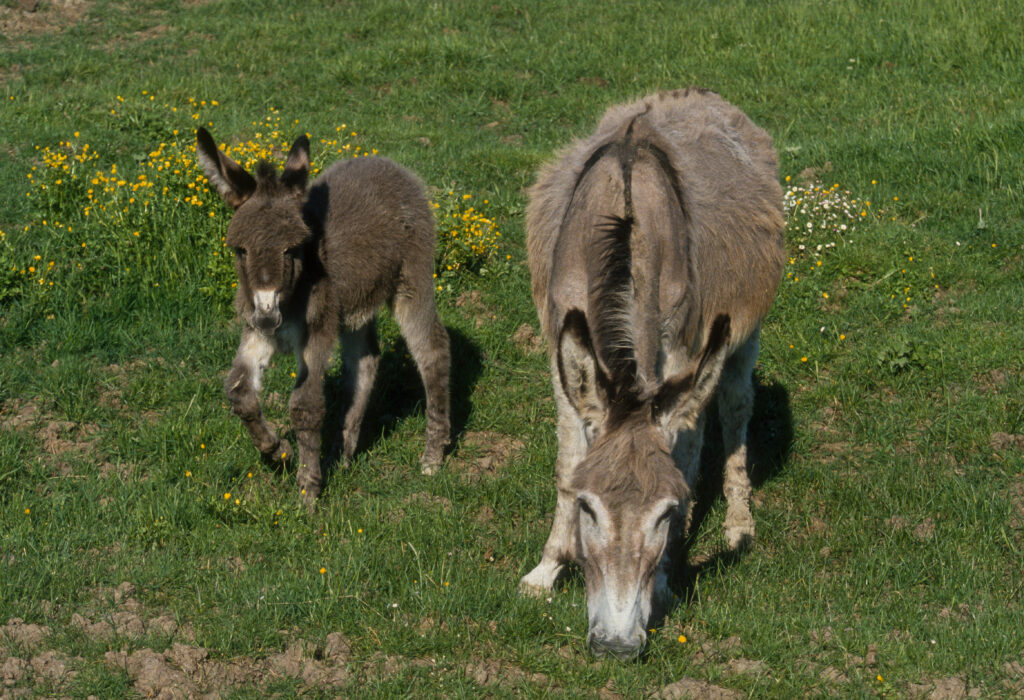
Important Reminders for Cripple Creek Wildlife Viewing:
Maintain a Safe Distance: Always observe wildlife from a respectful distance to avoid disturbing them or putting yourself in danger.
Never Feed Wild Animals: Feeding wild animals can make them dependent on humans and lead to aggressive behavior. If you are interested in feeding the local donkey herd, you can buy approved donkey biscuits in town.
Time of Day: Dawn and dusk are often the best times for wildlife viewing, as many animals are more active during these periods.
Watch for Wildlife on Roads: Cripple Creek’s wildlife can often be seen from the comfort of your vehicle. Always drive cautiously, especially at dawn and dusk, as deer, elk, and other animals are frequently active near and on roadways.
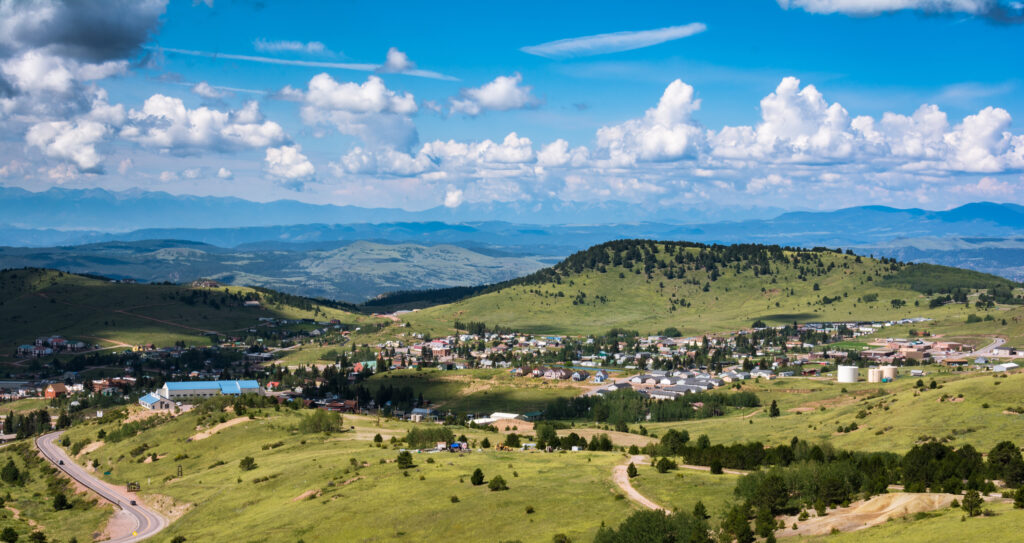
Stay & Play With Triple Crown Casinos
If you are looking for the best Casino action in Cripple Creek, choose Triple Crown Casinos. After exploring the natural beauty and spotting wildlife of Cripple Creek, Triple Crown Casinos offers a fun and convenient base to enjoy everything this unique mountain town has to offer. Our modern rooms, friendly staff, delicious dining options, and thrilling casino action are sure to make your Cripple Creek visit unforgettable.

